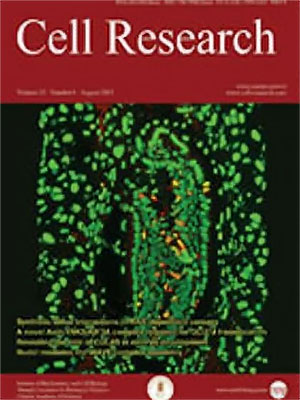
Volume 13, No 3, Jun 2003
ISSN: 1001-0602
EISSN: 1748-7838 2018
impact factor 17.848*
(Clarivate Analytics, 2019)
Volume 13 Issue 3, June 2003: 203-209
ORIGINAL ARTICLES
Coxsackievirus B3-induced apoptosis and Caspase-3
Jian Ping YUAN, Wei ZHAO, Hong Tao WANG, Kai Yu WU, Tao LI, Xiao Kui GUO*, Shan Qing TONG
Department of Microbiology and Parasitology, Shanghai Second Medical University, Shanghai 200025, China
Correspondence: Xiao Kui GUO(xkguo@shsmu.edu.cn)
Cell death can be classified into two categories: apoptosis and necrosis. Apoptotic pathway can be either caspase-dependent or caspase-independent. Caspase-independent cytopathic effect (CPE) has been described. In order to evaluate the pattern of HeLa cell death induced by Coxsackievirus B3 (CVB3) and whether apoptosis involves caspase activation, we co-cultivated HeLa cells with CVB3 and detected the cytopathic changes, the alteration of mRNA and protein expression of caspase-3 gene plus caspase-3 activity, as well as analyzing DNA fragmentation before and after caspase-3 activity inhibition. According to the results, we propose that CVB3 may induce apoptosis and necrosis in HeLa cells, the latter appearing much earlier. Caspase-3 is activated at the levels of both transcription and translation, and procaspase-3 is proteolytically cleaved, thus leading to the continuous increasing of both caspase-3 precursor protein and its subunit. However, besides CPE, apoptosis induced by CVB3 is not a direct consequence of the activation of caspase-3, or caspase-3 is not the only effector molecule in apoptotic cell death, for caspase-3 inhibitor can not decrease DNA fragmentation. Some other biochemical mechanisms may participate in the process, whose role weakens the effect of inhibiting caspase-3 activity.
FULL TEXT | PDF
Browse 2122


